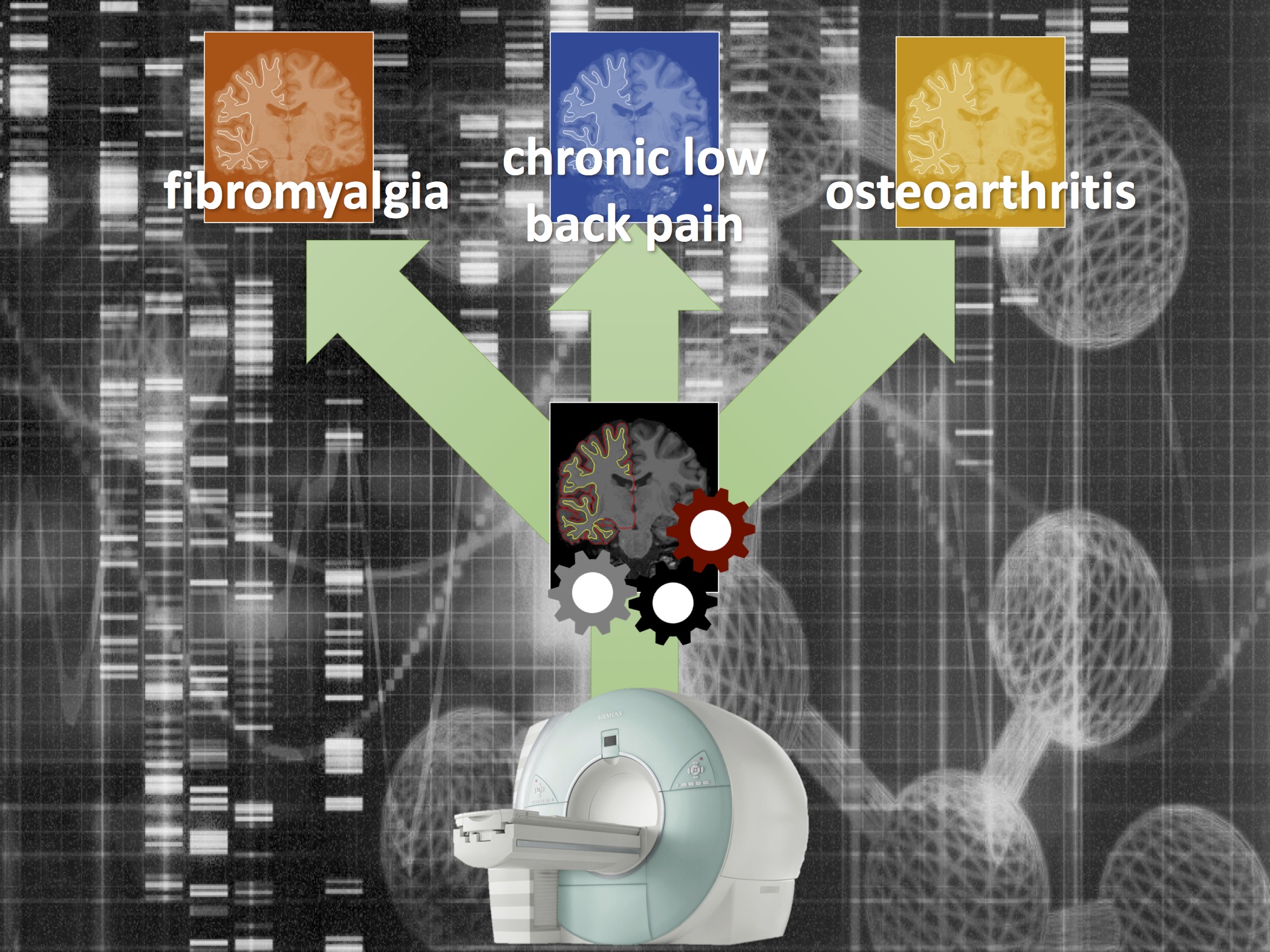Objectively classifying and diagnosing different pain conditions remains a challenge for scientific research and clinical practice. Currently, self-report measures of pain and psychosocial factors are considered the gold standard for pain measurement and these measures perform well. Also our group contributed substantially to the classification of pain profiles in patients with chronic pain.
Due to the absence of peripheral tissue abnormalities in a lot of patients with chronic pain, neural correlates of chronic pain states have gained particular interest. Studies using magnetic resonance imaging (MRI) of the brain have revealed several abnormalities in patients with chronic pain compared to healthy people. For instance, a study of Apkarian et al. 2004 was the first to report reduced prefrontal and thalamic gray matter in patients with chronic low back pain. Since then, multiple studies revealed structural gray and white matter abnormalities, as well as functional abnormalities in the brains of patients with chronic pain.

Maybe even more interesting, the research group of Apkarian revealed that different chronic pain types exhibit unique anatomical 'brain signatures' (Baliki et al. 2011). More specifically, they were able to create a barcode based on gray matter density profiles and used this to classify chronic pain patients (including chronic low back pain, complex regional pain syndrome, and osteoarthritis) with high accuracy. In accordance with this approach, Boissoneault et al. 2017 wrote a very interesting review about the use of brain imaging and machine learning to identify biomarkers for musculoskeletal pain conditions. Machine learning involves making automated predictions about previously unknown data, which enables the identification of subgroups within existing chronic pain conditions or new diagnostic classification criteria based on brain abnormalities. In this paper, they report that machine learning classifier studies based on structural brain features performed differently, with sensitivity and specificity ranging from 65% to 81%.
Fewer studies have used functional MRI to identify classification models for chronic pain, however, substantial sensitivity and specificity values were reported. These studies indicate that using machine learning to identify biomarkers for chronic pain conditions have the potential to aid in classifying and diagnosing chronic pain disorders and may even help steer personalized treatment programmes. It is obvious that such an approach will currently not replace patient self-report methods due to several theoretical, practical, and ethical concerns. However, with further technological development and possible increased accessibility of brain imaging in mind, automated classification of chronic pain disorders may become reality in the future.
Jeroen Kregel
Member of the international Pain in Motion research group.
PhD researcher at the Ghent University, Ghent, Belgium and Vrije Universiteit Brussel, Brussels, Belgium.
2017 Pain in Motion
References and further reading:
Boissoneault et al. Biomarkers for Musculoskeletal Pain Conditions: Use of Brain Imaging and Machine Learning. Curr Rheumatol Rep. 2017 Jan;19(1):5.
https://www.ncbi.nlm.nih.gov/pubmed/28144827
Apkarian et al. Chronic back pain is associated with decreased prefrontal and thalamic gray matter density. J Neurosci. 2004 Nov 17;24(46):10410-5.
https://www.ncbi.nlm.nih.gov/pubmed/15548656
Baliki et al. Brain morphological signatures for chronic pain. PLoS One. 2011;6(10):e26010.
https://www.ncbi.nlm.nih.gov/pubmed/22022493
Nijs et al. Low back pain: guidelines for the clinical classification of predominant neuropathic, nociceptive, or central sensitization pain. Pain Physician. 2015 May-Jun;18(3):E333-46.